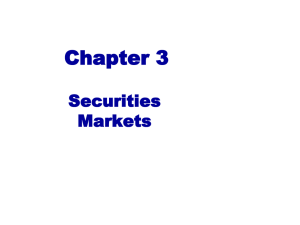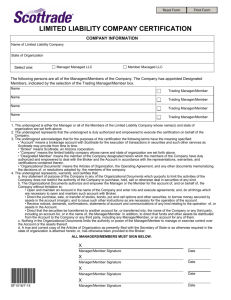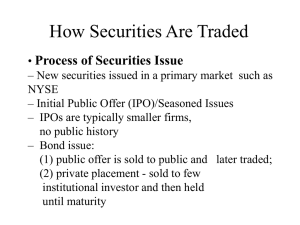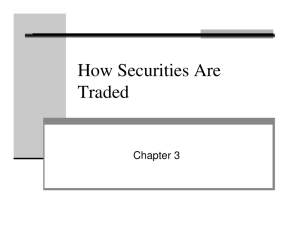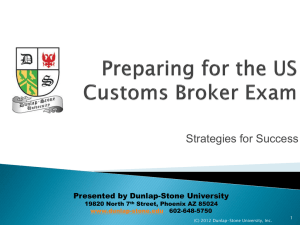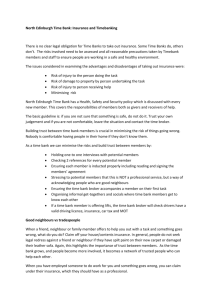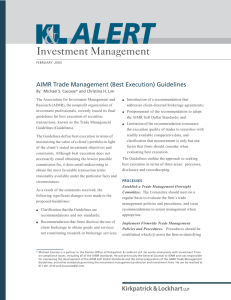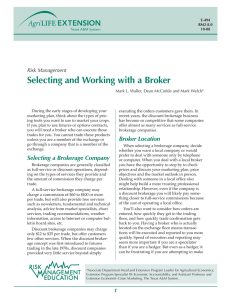Operation of Stock Exchange
advertisement
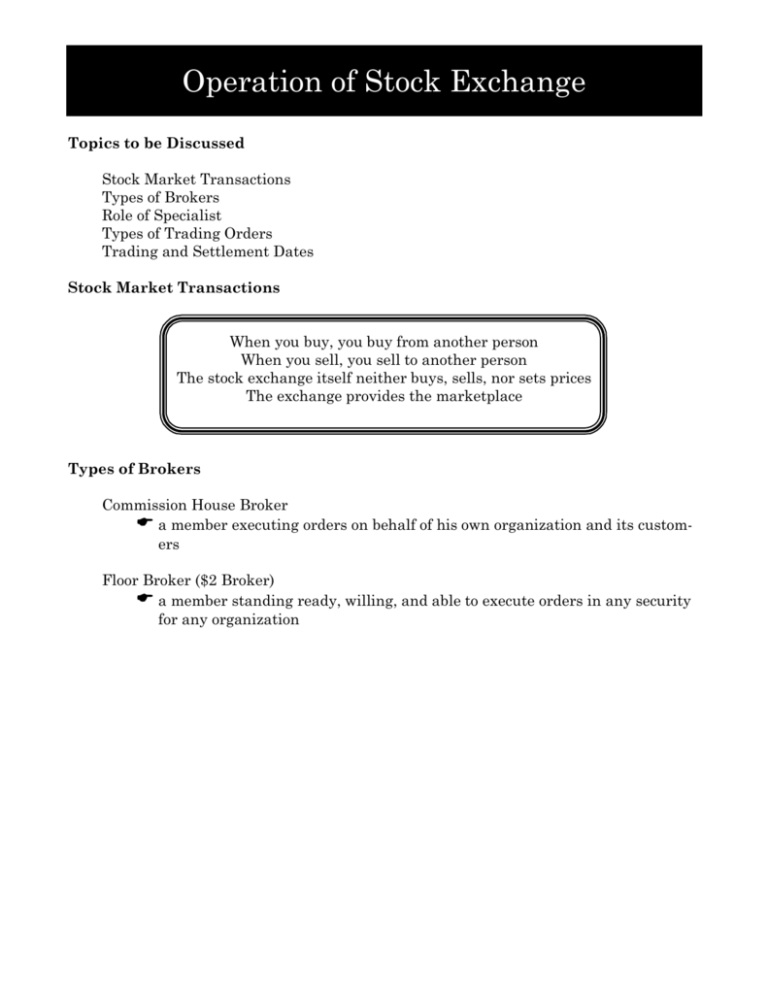
Operation of Stock Exchange Topics to be Discussed Stock Market Transactions Types of Brokers Role of Specialist Types of Trading Orders Trading and Settlement Dates Stock Market Transactions When you buy, you buy from another person When you sell, you sell to another person The stock exchange itself neither buys, sells, nor sets prices The exchange provides the marketplace Types of Brokers Commission House Broker a member executing orders on behalf of his own organization and its customers Floor Broker ($2 Broker) a member standing ready, willing, and able to execute orders in any security for any organization Class Notes Online Trading Action Buy Sell Buy on Margin Sell Short Operation of Stock Exchange -2- Class Notes Operation of Stock Exchange -3- Buying on Margin “Margin” is borrowing money from your broker to buy a stock and using your investment as collateral. Example Buy paying full price Buy stock at $60. Stock price goes to $90. Return = (90 - 60)/60 = 50% Buy on “margin” Buy stock at $60. Borrow $30; you pay $30. Stock price goes to $90. You have Owe You have, net You paid $90 $30 $60 $30 Return = (60 – 30)/30 = 100% Possible problems with margin call Sell Short Short selling is selling stock you do not own. The stock you borrow comes from either the brokerage firm’s own inventory, the margin account of another of the firm’s clients, or another brokerage firm. You will benefit only if the stock price drops Possibility of making large profits Class Notes Operation of Stock Exchange Example – Bank of America October 1, 2008 - $38.13 – sell short October 10, 2008 - $20.87 – buy stock to replace stock sold Profit (not counting interest expense) $38.13 – 20.87 = $17.86 per share (83%) -4- Class Notes Operation of Stock Exchange -5- Types of Trading Orders Price Limits Market order the broker must buy or sell at the best price obtainable the customer is certain that a market order will be completed Limit order the broker is to execute at the limit or better a limit order to buy is executed at the limit or lower a limit order to sell is executed at the limit or higher there is a chance that the order may not be executed Stop order to buy -- limit price is placed above the current market price stop order becomes a market order when the stock sells at or above the stop price to sell -- limit price is placed below the current market price stop order becomes a market order when the stock sells at or below the stop price Stop limit order to buy -- limit price is placed above the current market price stop order becomes a effective as soon as there is a sale at the stop price or higher, and then it is executed, if possible, at the limit or lower to sell -- limit price is placed below the current market price stop order becomes a effective as soon as there is a sale at the stop price or lower, and then it is executed, if possible, at the limit or higher Time limits Day order to buy or sell during the day or expire at the end of that trading day Open order (Good Till Canceled) to buy or sell at a set price until the order is either executed or canceled Fill or kill if the order cannot be filled at once, in its entirety, at the stipulated price, it is canceled and a fresh quote is given from the floor Immediate or cancel similar to the fill or kill order except the broker may fill as much of it as possible and cancel the remainder Class Notes Operation of Stock Exchange -6- Role of Specialist Specialist is member of exchange appointed to maintain an orderly succession of prices in selected stocks specialist expected to buy securities in declining markets and to sell securities in rising markets specialist buys for his/her own account Designated Market Makers (DMM) – replaced specialists no longer having first/exclusive look at buy and sell orders they can now compete against other exchange members for trades, rather than facilitate trades for them, as had been their charge charged with providing liquidity for market Class Notes Operation of Stock Exchange -7- Trading and Settlement Dates Confirmation statements - provided by broker number of shares name of the securities purchased/sold unit price amount that is due/receivable Trading date date of purchase/sale Settlement date purchaser has three business days after trading date to pay amount that is due seller has three business days after trading date to deliver stock to broker
